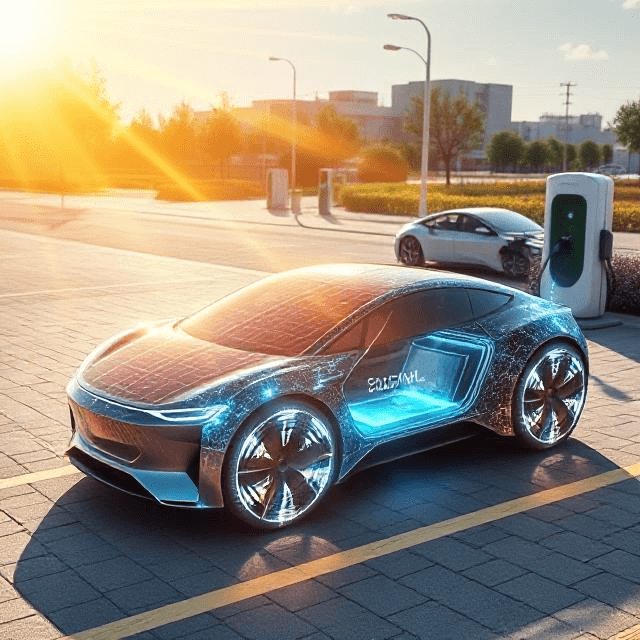Introduction: A New Dawn for Electric Vehicles
As the world shifts towards sustainable energy, a revolutionary concept is gaining momentum—solar-powered cars. Imagine driving an EV that charges itself using sunlight, reducing reliance on charging stations. But how realistic is this technology? Can solar cars compete with traditional battery-electric vehicles (BEVs)? Let’s examine their potential, challenges, and future prospects.
How Do Solar-Powered Cars Work?
Solar EVs use photovoltaic (PV) panels integrated into their surface to convert sunlight into electricity, which either powers the vehicle directly or is stored in a battery for later use.
Key Components:
- Solar Panels: Absorb sunlight and convert it into electrical energy.
- Battery Pack: Stores excess energy for night-time or cloudy-day driving.
- Electric Motor: Uses stored electricity to drive the vehicle.
Advantages of Solar-Powered Cars
Energy Independence and Sustainability
- Reduce dependence on external power sources.
- Lower carbon footprint compared to grid-charged EVs.
Lower Operating Costs
- Free energy from the sun cuts down electricity costs.
- Reduced wear on battery packs due to continuous trickle charging.
Extended Range with On-the-Go Charging
- Some solar EVs can generate up to 45 miles of range per day in optimal sunlight.
- Can act as a backup power source in emergencies.
Notable Solar EV Projects and Companies
Who’s Leading the Solar Car Revolution?
- Lightyear 2 – A long-range solar EV expected to launch by 2025.
- Aptera Motors – Claims its vehicle can drive 1,000 miles on a single charge with solar assistance.
- Sono Motors Sion – A solar-powered family car integrating PV panels into its body (source).
Challenges and Limitations
Limited Energy Conversion Efficiency
- Solar panels on cars capture only 15-25% of available sunlight.
- Cloudy weather and nighttime driving require a backup battery system.
Surface Area Constraints
- Limited roof space restricts how many panels can be installed.
- Larger vehicles can generate more energy, but passenger cars remain restricted.
High Initial Costs
- Solar-integrated EVs are more expensive than traditional EVs.
- Technology and material costs are still evolving.
The Future of Solar-Powered Cars
Advancements in solar panel efficiency, lightweight materials, and energy storage are gradually making solar-powered cars more viable. As renewable energy technology improves and manufacturing costs drop, solar-assisted EVs could become an attractive alternative for sustainable mobility.





























